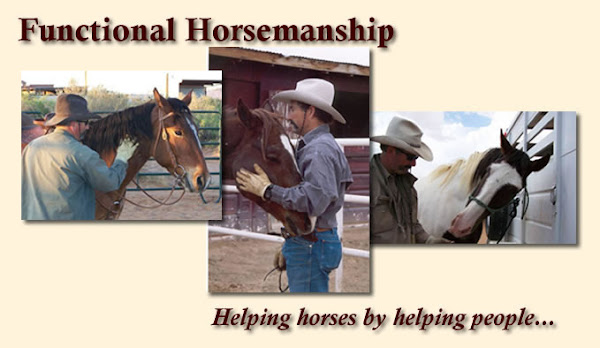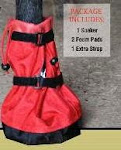I have wrote about cleaning felt saddle pads awhile back, but it is a good topic for hot weather riding as the horse's sweat more and those saddle pads, wool felt, sheep skin or even the Neoprene rubber ones accumulate more dried salt from horse sweat and other gunk a lot easier.
While Neoprene is easier to clean, I just don't like Neoprene saddle pads or cinchas for that matter. The exception for me on a synthetic pad is the pad available from SaddleSkin because it removes the main objection on Neoprene pads and that is heat buildup. And while there are pads with holes, intended to release heat or prevent heat build up, I just don't think they work very well.
So if you are one of those Neoprene saddle pad user, you may want to give SaddleSkin a look - I think with it's air channels it allows much more air flow and does reduce heat buildup, as well as absorb or attenuate trauma (impact) to the horse's back, it also keeps the saddle from slipping when the horse is really sweated up.
Having said all that, I pretty much exclusively use felt pads. Previously I used a wide variety of felt pads including the Impact Gel pads, but nowdays I use CSI pads. CSI offers a rubber curry brush to use to brush and clean their pads however it doesn't work very well for me as it's not stiff enough to scrap the dried sweat and hair from the pad.
After a ride, I'll let the felt pad air dry, then usually as I'm saddling up for the next ride, I'll slap the pad across the sides of the trailer or a tie rail to loosen up the dirt and junk, then lay the pad upside down on my horses' backs or a saddle stand and lightly scrub the dried hair and sweat from the pad using a metal curry brush. If you brush too hard you will tear up the felt, so brush lightly using the teeth or flat edge of the curry brush. I'll run my hand over the pad to ensure there aren't any crusty, sharp patches that can make the weight of a saddle and rider bearing on the horse's back uncomfortable, then I'll take a soft brush and brush away any loose dirt, salt or hair.
There are several products that are offered to help clean felt saddle pads. While I'm sure they work to clean and disinfect, I haven't used any soap type product on my felt pads in probably 10 years.
If you haven't cleaned your pad lately, take a look at it and see if you would want a patch of dried sweat (basically salt) being rubbed across your back. You can see the sweat (salt) buildup on the pad in the picture at right. If the salt build up if not cleaned would be running on the horse's back and loins when the weight of the saddle and rider is applied and more so as the saddle normally twists somewhat during riding.
One more point is that if you can afford to do so, have a saddle pad to each horse rather than use the same pad for multiple horses. This pays off not just to reduce any skin contamination from horse to horse, but also allows you to have the best pad for fit on each horse.





















